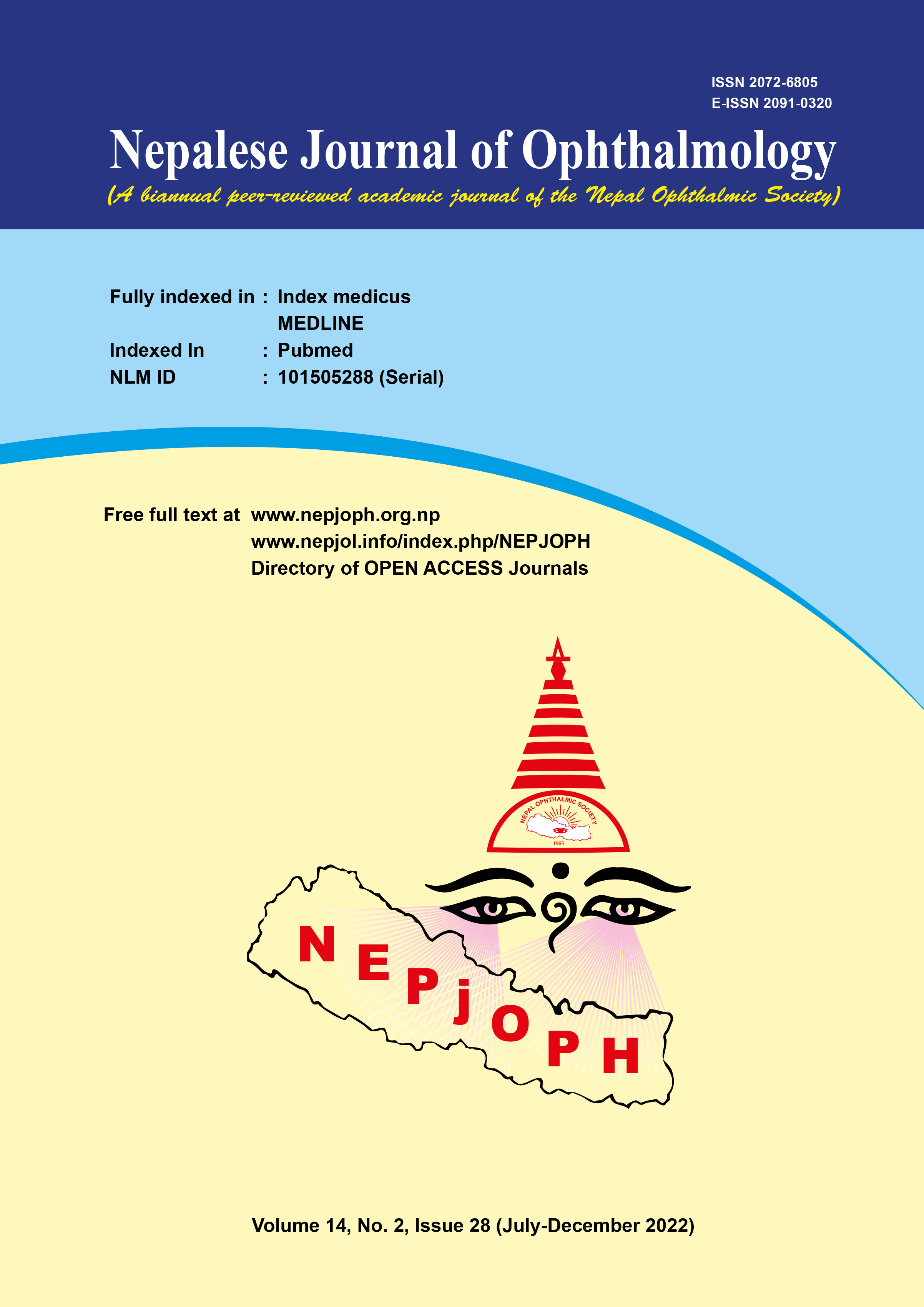An unusual presentation of uveo-meningeoencephalitic syndrome
DOI:
https://doi.org/10.3126/nepjoph.v14i2.33643Keywords:
Choroid, Posterior uveitis, VKH syndromeAbstract
Introduction: Unilateral uveo-meningeoenchephalitic syndrome is a relatively rare entity. Our case highlights the importance of keeping this entity in mind when a unilateral picture suggestive of Vogt Koyanagi Harada syndrome crops up.
Case: A 34-year-old male came with chief complaints of blurring of vision in the right eye since two days with a prodrome of intense headache and redness in the right eye. On examination, the vision in the right eye was counting fingers close to face and 20/20 in the left eye. Clinical examination suggested unilateral uveo-meningeoenchephalitic syndrome which was confirmed on multimodal imaging.
Observations: This case highlights the fact that though uveo-meningeoenchephalitic syndrome is bilateral, by definition; the initial presentation may still be unilateral and a prompt diagnosis and treatment can prevent the involvement of the other eye.
Conclusion: Any case presenting with signs of symptoms suggestive of Vogt Koyanagi Harada should be treated as Vogt Koyanagi Harada even though the initial presentation may be unilateral. A prompt diagnosis and early treatment will ensure that the other eye does not get involved. Early Vogt Koyanagi Harada may just present with choroidal hyperpermeability and multiple septate pockets of SRF without any vitreous cells or anterior segment inflammation.
Downloads
Downloads
Published
How to Cite
Issue
Section
License
Copyright (c) 2022 Nepalese Journal of Ophthalmology

This work is licensed under a Creative Commons Attribution-NonCommercial-NoDerivatives 4.0 International License.
This license enables reusers to copy and distribute the material in any medium or format in unadapted form only, for noncommercial purposes only, and only so long as attribution is given to the creator.




